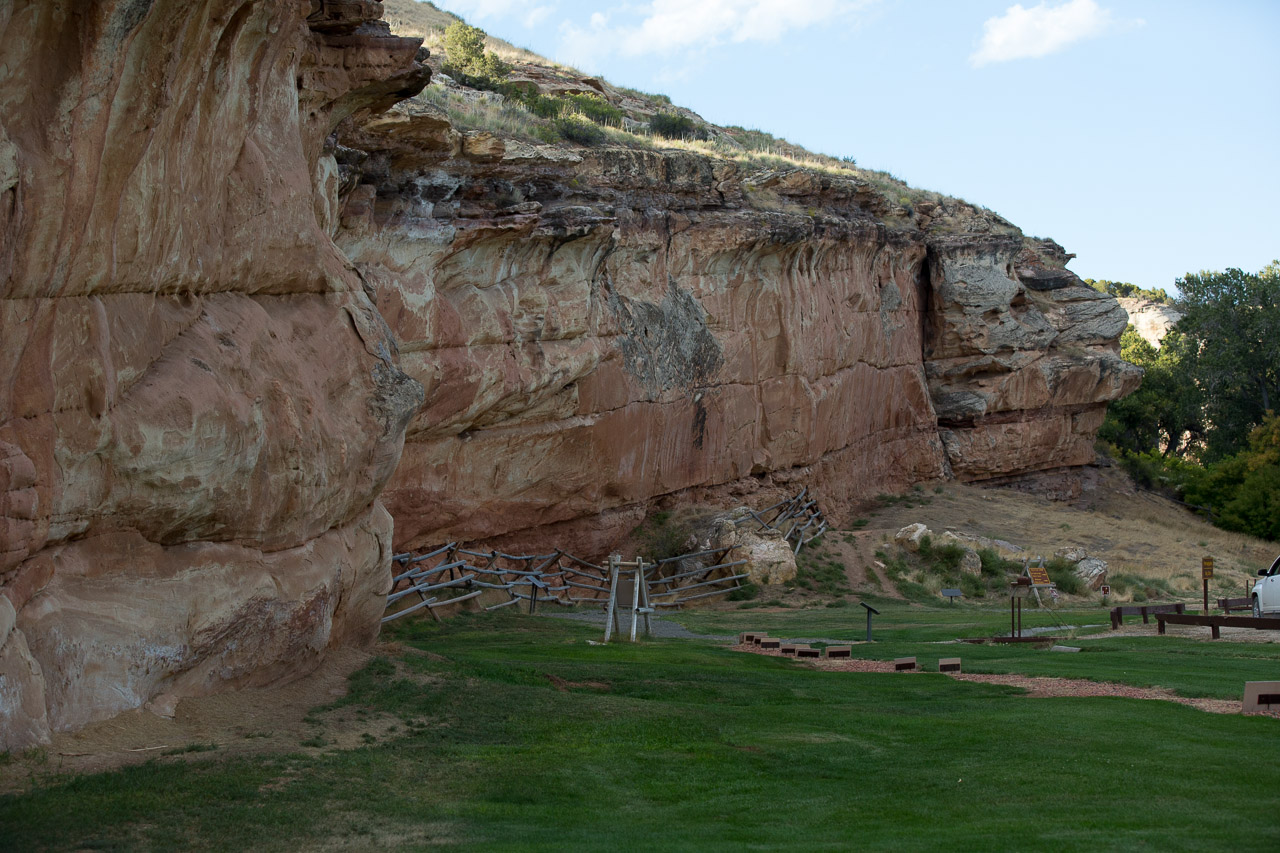
Medicine Lodge Archaeological Site
The Medicine Lodge site has long been known for its Indian petroglyphs and pictographs, but not until 1969 did the full archaeological wealth of the site come to light. In that year, Dr. George Frison, then Wyoming State Archaeologist, began a series of digs that uncovered a human habitation site that had been continuously occupied for more than 10,000 years. Medicine Lodge has thus become a key to the interpretation of the archaeology of the entire Big Horn Basin Area. The archaeological investigation involved digging through approximately 26 feet of soil and rocky sediments, discovering over 60 cultural levels spanning some 10,000 years of human occupation. This important aspect of the site enables the archaeologists to examine particular lifestyles and to study how they changed over time. Some of the material items found during the dig included fire pits, food storage pits, manos and metates (grinding stones), and projectile points. (Wyoming State Parks) As at Pictograph Montana colored pictographs are fading. However, this site also has incised petroglyphs. The soft sandstone lends itself to grinding down with the edge of a sharp stone to make various designs. But the surface and interior of the sandstone are the same color to the pictographs do not provide high contrast for photography.




















